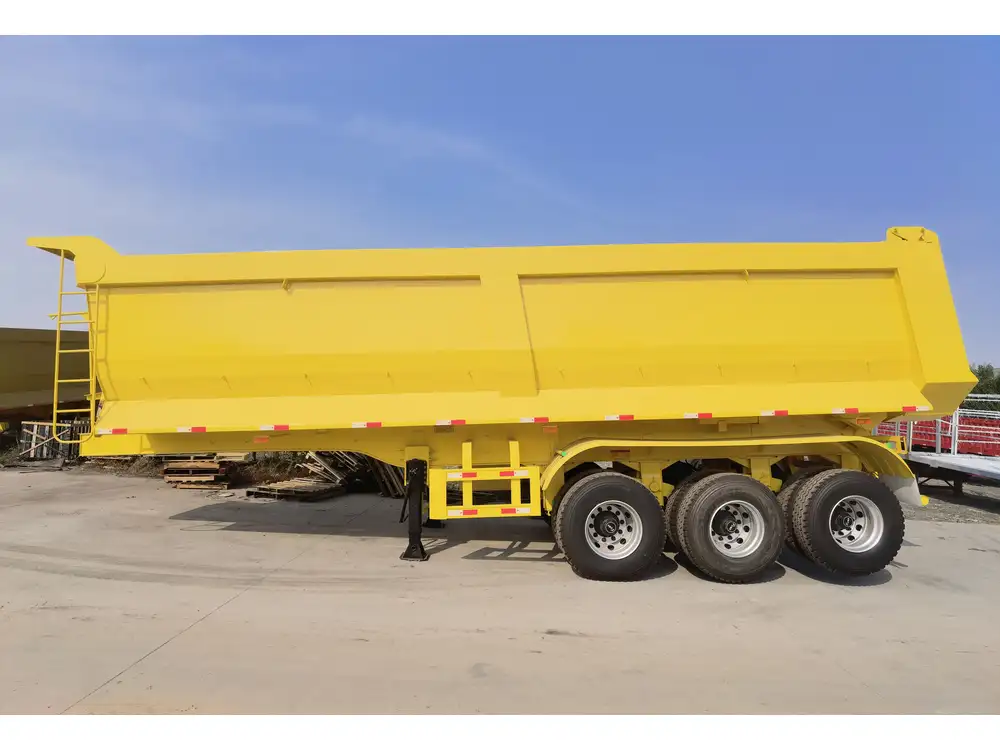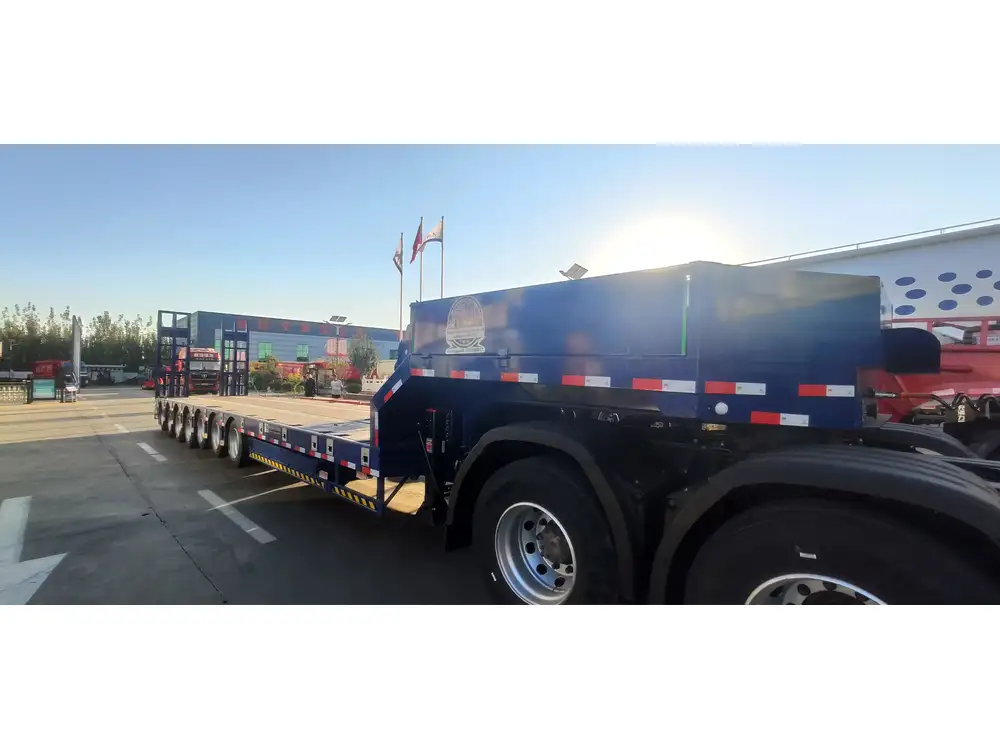Changing brake shoes on a semi-trailer is a vital maintenance task that ensures the safety and performance of the vehicle. Improperly maintained brakes can lead to severe consequences, including accidents and wear on other vehicle components. In this detailed guide, we will walk you through the entire process of changing brake shoes, discussing tips, techniques, and common pitfalls to avoid.
Understanding the Brake System Components
Before diving into the nitty-gritty of the brake shoe replacement process, it’s crucial to understand the components involved:
Key Components of the Brake System
| Component | Description |
|---|---|
| Brake Shoes | Friction elements that press against the drum to create stopping power. |
| Brake Drum | The circular housing where brake shoes make contact to provide braking force. |
| Wheel Cylinder | Hydraulic component that pushes the brake shoes apart against the drum. |
| Adjustment Mechanism | System that ensures optimal contact between brake shoes and drum. |
Each of these components plays a vital role in the braking system’s overall efficacy. Knowing their functions helps in understanding the importance of periodic checks and maintenance.

Signs of Worn Brake Shoes
Identifying worn brake shoes before they cause major issues is crucial. Look out for the following signs:
- Squeaking or Grinding Noise: A clear indication that the brake shoes are nearing their end of service life.
- Increased Stopping Distance: If stopping requires more distance than usual, it might be time to inspect the brake shoes.
- Vibrations When Braking: Unusual vibrations can be a signal that the brake shoes are unevenly worn.
Pre-inspection Checks
Before starting the replacement, ensure that all professional safety measures are in place. Use proper safety gear such as gloves and goggles, and follow these preliminary steps:
- Park on a Level Surface: Ensure the trailer is on a flat area to prevent rolling.
- Secure the Vehicle: Engage the parking brake and wheel chocks.
- Remove the Wheels: Use a jack to elevate the semi-trailer and place jack stands securely.
Tools Required for Changing Brake Shoes
Preparation makes all the difference in efficiency. Here is a comprehensive list of tools you will need:
| Tool | Purpose |
|---|---|
| Socket Set | For removal of bolts and nuts. |
| Wrench Set | For tightening and loosening nuts. |
| Brake Spring Tool | To install and remove brake springs safely. |
| Pry Bar | To aid in separating components if they are stuck. |
| Torque Wrench | For ensuring bolts are tightened to the correct specs. |
| Brake Cleaner | To clean the drum and components before assembly. |
| Shop Towels | For cleaning and wiping down surfaces. |

Step-by-Step Process to Change Brake Shoes on a Semi-Trailer
1. Removing the Brake Drum
- Loosen the Fasteners: Using your socket set, remove the bolts securing the brake drum to the wheel.
- Pull the Drum Off: Gently pull the drum straight off the hub. If it’s stuck, a small amount of force might be necessary. Use a rubber mallet rather than a hammer to avoid damaging the drum.
2. Inspecting the Components
Before replacing the brake shoes, carefully inspect the following parts for wear:
- Brake Drum: Check for scoring or cracks.
- Brake Hardware: Springs and other components should be checked for signs of wear and replacement if necessary.

3. Removing Old Brake Shoes
- Take Note of the Assembly: Document or take pictures of the setup for reference during installation.
- Release the Springs: Use the brake spring tool to remove the retaining springs and clips holding the brake shoes in place.
- Remove the Shoes: With the springs now removed, carefully slide out the old brake shoes from their positions.
4. Installing New Brake Shoes
- Prepare the Area: Clean the brake drum and the area where the shoes will sit with brake cleaner and shop towels.
- Position New Shoes: Align the new brake shoes in the same orientation as the old ones, ensuring they sit correctly against the backing plate.
- Attach Springs: Use the brake spring tool to reattach all springs, ensuring they are securely in place. This step requires caution, as incorrect installation can lead to brake failure.
5. Reinstalling the Brake Drum
- Check the Fit: Before replacing the drum, ensure the shoes are correctly positioned and won’t inhibit the rotation of the drum.
- Slide the Drum Back On: Carefully align and fit the drum back onto the hub, ensuring it fits snugly against the newly installed shoes.
- Secure the Drum: Reattach all bolts securing the brake drum and tighten them to the manufacturer’s specifications using a torque wrench.

6. Adjusting the Brakes
Brakes may require adjustment after new shoes are installed. This ensures that the shoes make proper contact with the brake drum:
- Rotate the adjustment wheel or lever (depending on system type) until the shoes just make contact with the drum, providing a slight drag.
Common Pitfalls to Avoid
- Neglecting Personal Safety: Always prioritize your safety gear and workspace integrity.
- Over-tightening Nuts: While it’s important to secure components, overtightening can lead to damage.
- Ignoring Brake Components: Always inspect and replace any worn components rather than just focusing on brake shoes.
Maintenance Tips for Extended Brake Shoe Life
To ensure the longevity of your newly installed brake shoes, consider the following maintenance tips:
- Regular Inspections: Conduct routine checks to identify wear and tear early.
- Proper Loading: Ensure loads are balanced to avoid uneven wear on the brakes.
- Environmental Considerations: Always store the trailer in a dry, clean environment to minimize corrosion effects.

Conclusion
Changing brake shoes on a semi-trailer is a task that, when done correctly, enhances vehicle safety and prolongs the life of the braking system. This guide offers a structured approach that allows both seasoned professionals and novices to navigate the complexities of brake maintenance efficiently. By following the steps outlined above and utilizing proper tools and safety measures, users can ensure that their semi-trailer remains reliable on the road. Remember, proactive maintenance is key to reducing long-term costs and maximizing the performance of your vehicle.
Regularly revisiting these maintenance practices, alongside thorough inspections, not only saves you from unexpected breakdowns but also contributes to safer journeys ahead.



